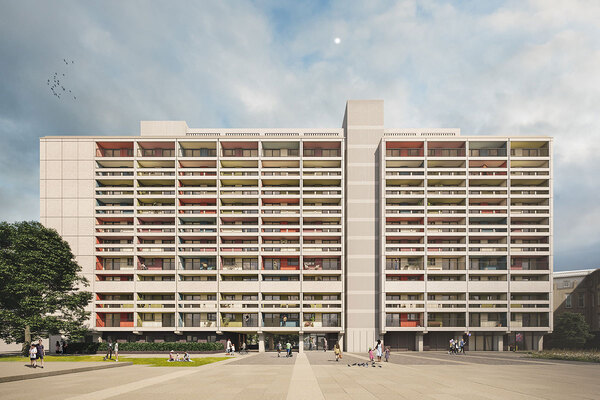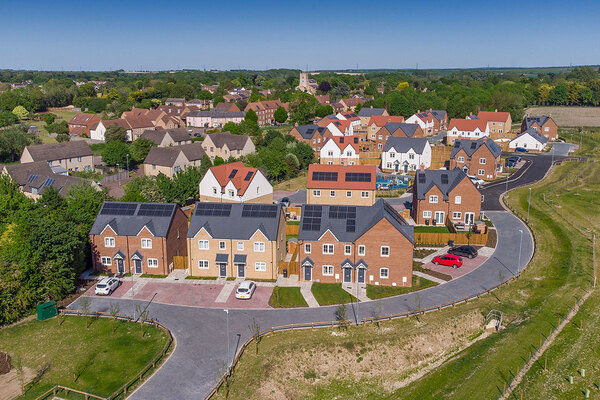How improving water efficiency can play a vital role in the decarbonisation of UK homes
With the UK government targeting net zero by 2050, sustainability and energy efficiency are important areas for those working to improve homes in the UK. That said, the decarbonisation of buildings often prioritises the installation of heat pumps and other renewable heat and energy generation sources without also considering demand reduction. Suzannah Adey, from Mira Showers and Kevin Farrow from Recoup, reveal the importance of focusing on hot water, as well as space heating, and how improving a building’s water and water heating efficiency can play a vital role in reducing its carbon emissions.
In recent years, housing providers have increasingly focused on sustainability and improving the efficiency of existing buildings. This is a pertinent area, as the UK Green Building Council estimates that 80% of the 2050 building stock has already been built.
Furthermore, increasing utility costs are exacerbating the demand for energy efficient heating and water systems to be installed in not only existing buildings but also new build properties, too. Of course, the more energy efficient the home, the lower the energy bills for the occupants.
While the government has incentivised the installation of heat pumps in residential dwellings, to more efficiently heat buildings and reduce carbon emissions, it’s also imperative that the showering industry looks closely at what can be done to reduce energy wastage. Indeed, recent reports suggest that up to 90% of the energy used to heat shower water ends up simply going down the drain.
With that in mind, it’s important to focus on the impact that improving water efficiency could have on any UK home’s efficiency and carbon emissions. That’s exactly why the utilisation of waste water heat recovery for showers (WWHRS) could play a significant role in helping the UK achieve net zero by 2050.
How does waste water heat recovery work?
Waste water heat recovery for showers systems utilise a heat exchanger to transfer the residual heat energy from the outgoing shower water and then use that to preheat the incoming cold water feed that supplies either/or the shower or the water heater.
As a result, the shower’s demand for hot water and the energy consumption will both be reduced significantly.
As a primary demand reduction technology, WWHRS prevents heat loss from the home and minimises energy demand by recycling the waste heat back to useable hot water. By doing so, it maximises energy efficiency and leads to a reduction in carbon emissions.
Recoup provides both vertical and horizontal WWHRS products, with solutions for any project sector and application. Highly efficient vertical pipes systems like the Recoup Pipe HEX that install on the floor below the shower are ideal for new build. Likewise, the Recoup Easyfit+ that is designed to install below a bath, but also provides a retrofit option applicable to existing housing. Recoup Drain+ options provide wet room and non-residential solutions and through collaboration with Mira other exciting product innovations will soon be introduced.
Ideal for residential retrofitting projects and social housing
The heat needed for UK buildings is one of the biggest contributors to carbon emissions, with existing homes contributing around 22%. With around 26 million properties requiring some form of retrofitting by 2050, when the government is targeting net zero, the need for shower industry to work closely with housing providers has never been higher.
The UK government’s recent allocation of a further £1.25 billion of grant funding, as part of the social housing decarbonisation fund (Wave 3), provides an ideal opportunity for manufacturers and social housing developers to work collaboratively on the supply and installation of SAP listed products like WWHRS. As a result, warmer and more energy efficient homes can be created and carbon emissions reduced.
Recommended for domestic new builds
Following the introduction of the latest changes to the Part L building regulations, requiring all new homes in England to have a 31% reduction in CO2 emissions, reducing hot water demand is an important area to consider. WWHRS is included in BRE’s Notional Dwelling specification, which provides suggested guidance on how to achieve new build compliance for Part L. Future changes as part of the Future Homes Standard 2025 will take carbon reduction and energy saving further, with WWHRS already placed to be included.
Playing a vital role in improving water efficiency
Once installed, WWHRS can typically reduce the energy required per shower use by up to 55%. As a result, these innovative systems not only reduce the building’s hot water requirements but also lower CO2 emissions and the resultant energy bills.
With that in mind, systems such as these are a cost-effective compliance measure for housing providers and housebuilders looking to maximise energy efficiency. Importantly WWHRS also has a very minimal impact on the user. There is no planned maintenance or servicing, no change of use, and importantly does not require any change to showering routines.
Waste water heat recovery for showers technology is an incredibly cost effective way of improving a building’s energy efficiency and helping the UK in its journey towards net zero.
Water saving tips
With the Energy Saving Trust revealing that heating water makes up around 20% of the average heating bill in the UK, identifying ways in which end users can reduce their heating bills is gaining increasing significance.
Aside from utilising the latest in waste water heat recovery for showers technology, it’s also important that housing providers are given a variety of options when it comes to water consumption too, such as flow regulators in mixer showers or smart shower technology. Indeed, digital showers such as the Mira Platinum allow users to access smart modes, track water usage and create customised pre-sets for all different users. Furthermore, the utilisation of the Eco mode will provide a superb showering experience at just six litres a minute, ensuring the conservation of water and energy.
Additionally, the quicker the shower, the more money will be saved. With the average shower using around nine litres of water every minute, cutting showers down by just two minutes could save around £43 per person each year.
The decarbonisation of homes is set to be a key focus for anyone involved in the built environment in the coming years. While it’s important that the heating industry identifies the most energy efficient and low-carbon ways of heating buildings, it’s also vital that a holistic approach is taken when it comes to the most optimal utilisation of hot water, too. This is especially pertinent when it comes to enhancing water efficiency and taking advantage of the resultant reduced carbon emissions.
Suzannah Adey is from Mira Showers and Kevin Farrow from Recoup




